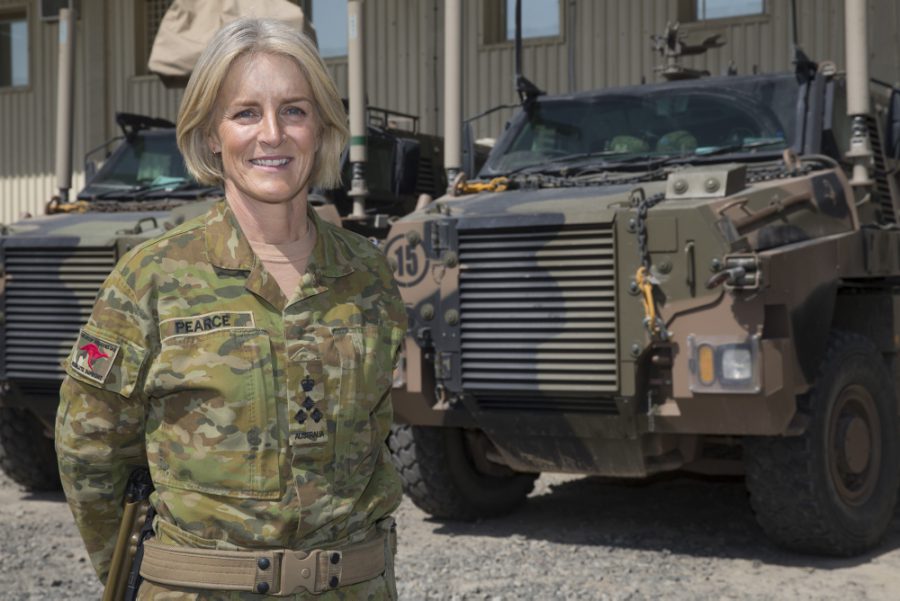 Originally published 9 November 2018.
Originally published 9 November 2018.
Overnight, UN Secretary-General Antonio Guterres
announced the appointment of Australian Brigadier Cheryl Pearce, on promotion to major general, as the next force commander of the UN Peacekeeping Mission in Cyprus (UNFICYP). It’s a significant decision not only for Australia, but also for the international community.
When Pearce takes up the new role, she will be only the second woman to be appointed force commander of a UN peacekeeping mission in the organisation’s 70-plus-year history. Her appointment comes at a time when Guterres is making an effort to
improve gender parity across the organisation, with mixed results.
While the UN has made improvements to women’s representation in its New York headquarters, progress is much slower in the field. Women make up
21% of UN peacekeeping personnel, yet they constitute only around 4% of the overall military component.
There is now some momentum in the international community to
increase the number of female military personnel serving in UN peacekeeping missions. Last month, the UN Security Council adopted a resolution on peacekeeping performance, which, among other things, called on the secretary-general to initiate ‘a revised strategy to double the numbers of women in military and police contingents’ by 2020.
Similarly, more than 150 member states have signed onto a
peacekeeping declaration which also includes a call to increase the number of women in peacekeeping. And the UN secretariat is encouraging member states through a range of incentives to ensure that 15% of their staff officers deployed to peacekeeping missions are women. However, progress is slow.
Since 2015, the rates of women in the military participating in peacekeeping have
barely shifted. Without concerted reforms, it will be decades until we see women’s participation rates improve. As I’ve
previously noted, efforts to improve the levels of female participation in peacekeeping are reliant on member states putting initiatives in place ‘to support the participation, retention and promotion of women’. And it’s not something that all countries contributing to peacekeeping seek to prioritise when it comes to their own defence forces.
Efforts to appoint women into senior leadership positions face even greater barriers, as their numbers are often even fewer in the military. While women currently make up more than 17% of the Australian Defence Force, at the star-ranked level they constitute
around 11% (although you can expect that figure to be much lower in many foreign militaries).
Those numbers partly explain why it has taken the UN more than four years to appoint another female force commander. But that’s no excuse. Pearce’s appointment, as with the appointment of the first female force commander, Major General Kristen Lund of Norway, in 2014, shows that it’s possible if countries are willing to be forward-thinking in putting forward female candidates.
As the current commandant of the Australian Defence Force Academy, Pearce is well attuned to some of the challenges of recruiting women to join the military, and the value that their participation can bring to the diversity, capability and operational effectiveness of the organisation. That skill, combined with her operational service in the UN mission in East Timor and as commander of the Australian Joint Task Force Group in Afghanistan, will be invaluable in her new role with UNFICYP.
We know that deploying women to peacekeeping missions is essential if missions are to be successful in implementing their mandates. As the secretary-general
noted last year, more ‘women in uniform has been shown to increase the protection reach of our missions, increase access to information from communities, and decrease incidents of sexual exploitation and abuse’.
As Australia has learned from recent deployments to Afghanistan and participation in humanitarian and disaster relief missions in the Indo-Pacific, the participation of women enhances the capabilities of a mission, while also contributing to diversity in thinking across the organisation. In senior leadership positions, female leaders can also serve as invaluable
role models for other women in the mission and in the broader community.
Australia has demonstrated significant leadership when it comes to women’s participation in the military and the integration of gender perspectives on operations. As Defence Minister Christopher Pyne
has noted, the appointment of Brigadier Pearce ‘is an important mark of our commitment to enhancing the participation of women in peace and security activities’. In the context of UN peacekeeping,
around 22% of the 36 Australian Defence Force personnel serving in South Sudan and the Middle East are women, exceeding the target set by the UN.
But we must be cautious about pointing to this as a high watermark of leadership for our peacekeeping contributions, as Australia still contributes relatively few peacekeepers. In fact, the appointment of an Australian to a leadership position in UNFICYP will likely be welcomed by the Cypriot community, given that Australia withdrew its police contingent from the mission in 2017 after 53 years of service.
Brigadier Pearce will have several challenges to navigate within the UN system as she takes up her new command. As one of her predecessors, Major General Lund,
noted:
As a woman, I not only had to do what every male Force Commander is expected to do, I also knew I had to use this opportunity to not only prove that women are up to the task of commanding large, multinational forces, but in addition, to demonstrate that they are capable of excelling in senior roles in a multitude of fields, both in the public and private sector.
There is no doubt that Brigadier Pearce is up to the challenge.
 Print This Post
Print This Post